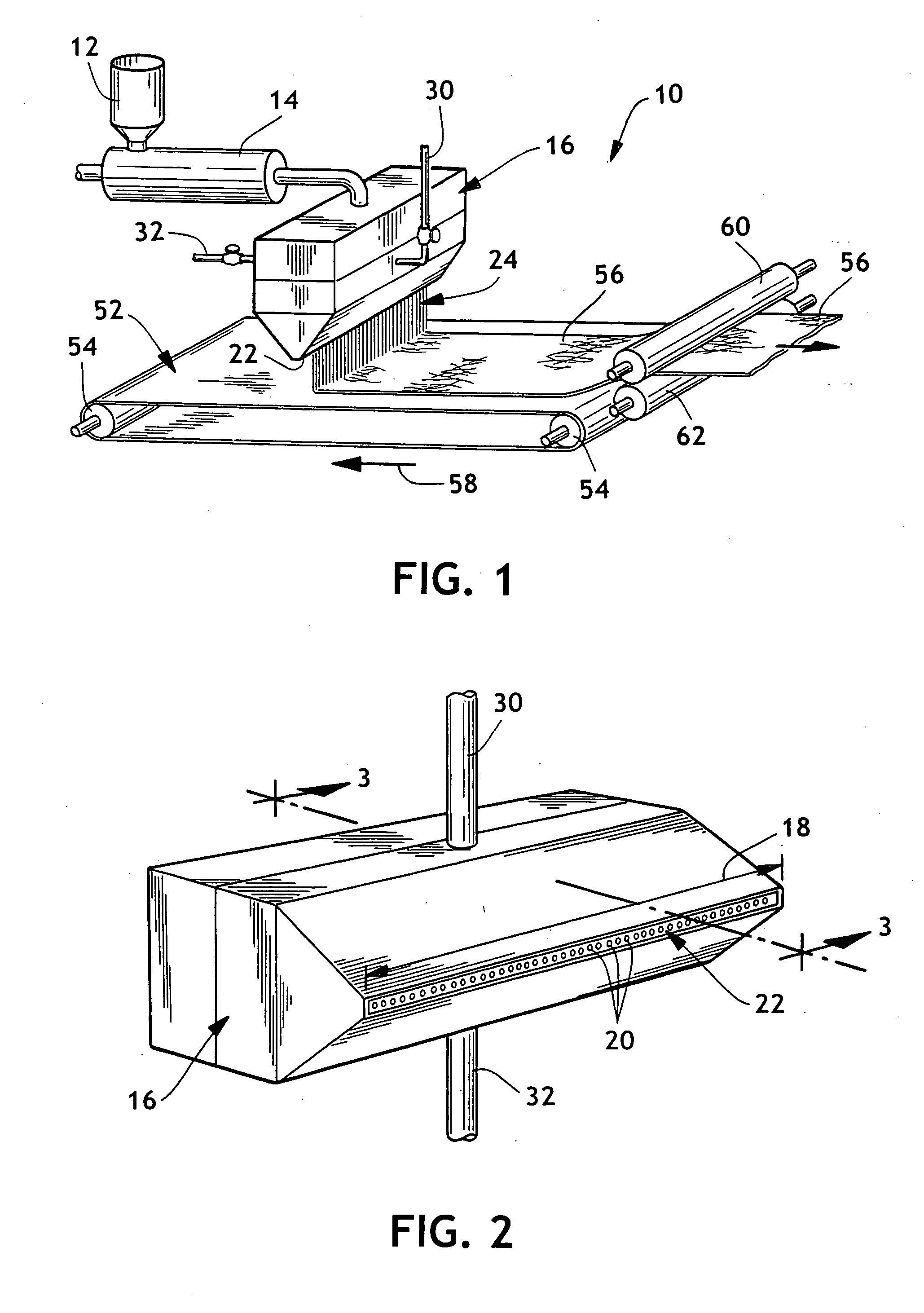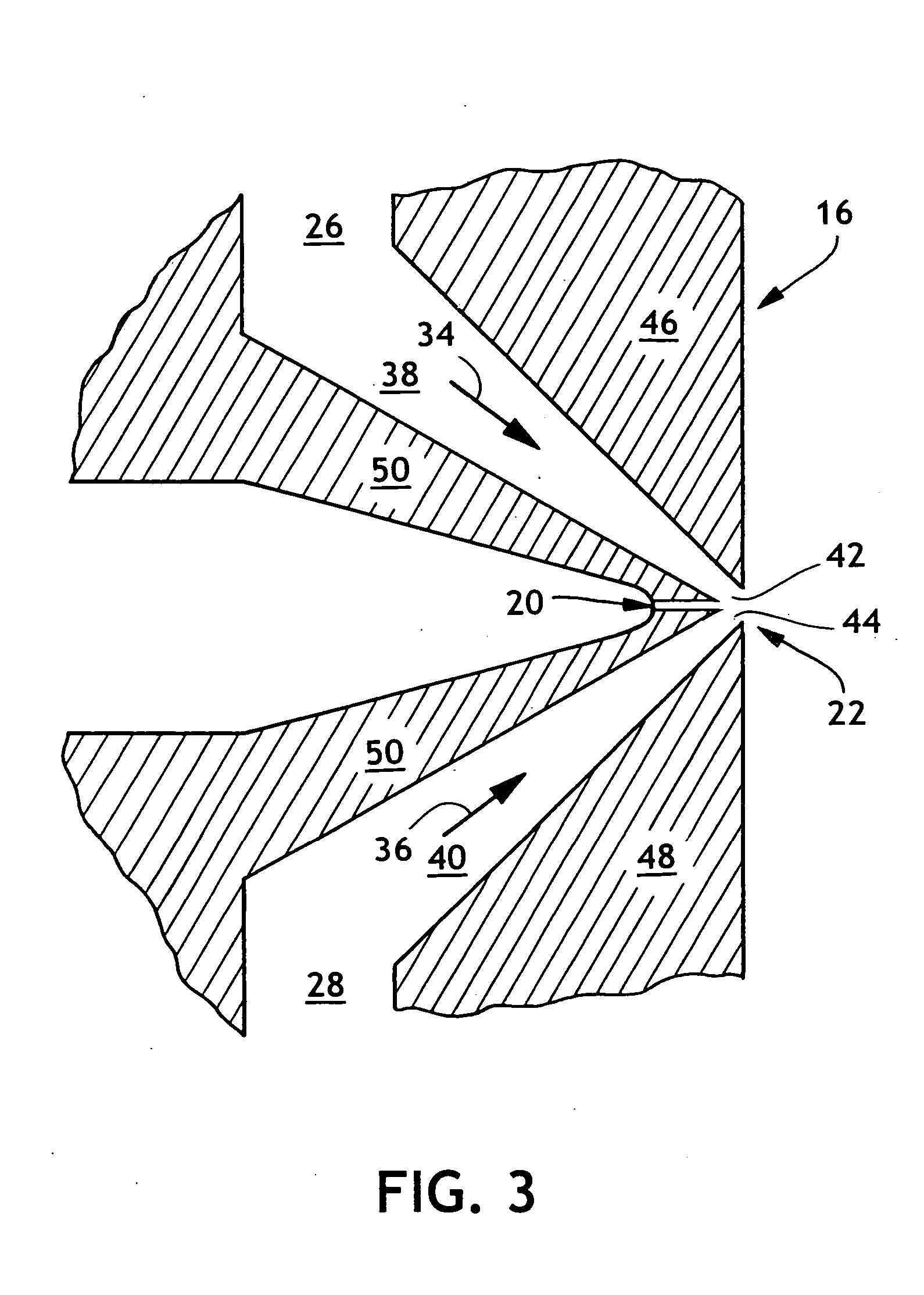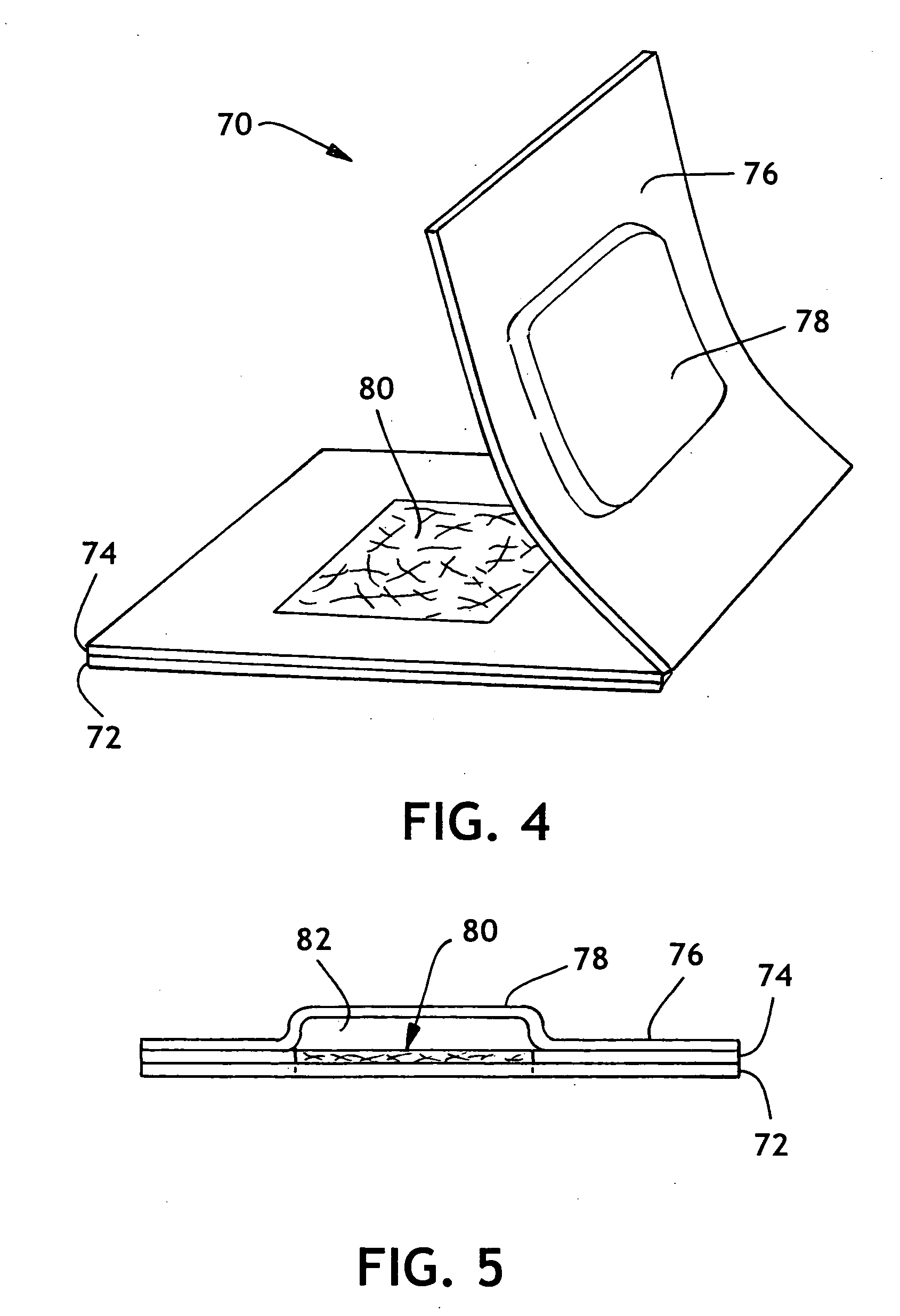Thermoplastic polymers with thermally reversible and non-reversible linkages, and articles using same
a technology of thermoplastic polymers and links, applied in the field of thermoplastic polymers and articles, can solve the problems of material melt strength compromise, polymer color change, and long-term physical attributes of such polymeric materials, and achieve the effects of color stability, melt strength, and product strength
- Summary
- Abstract
- Description
- Claims
- Application Information
AI Technical Summary
Benefits of technology
Problems solved by technology
Method used
Image
Examples
example set 1
Example 1
2:1 Ratio of Hard Segment to Soft Segment
1:1 Ratio of Non-Reversible to Reversible Hard Segment
422.51 g (0.0497 moles) of polyethylene glycol (PEG) 8,000 number average molecular weight, pharmaceutical grade (Polysciences, Inc.) was dried at 80° C. in a vacuum oven for approximately 40 hours. The resin kettle was then equipped with a high torque mechanical stirrer (ca. 300 rpm) and nitrogen / argon inlet / outlet. The temperature of the melted pre-dried PEG was allowed to equilibrate at ca. 70° C. Benzoyl chloride, from Aldrich, (75 microliters) was added with stirring. After one hour, a 2:1 molar ratio of Methylene diphenyl diisocyanate (MDI) from Aldrich, at 24.85 g (0.09941 moles) was added to the PEG to endcap the polymer. All MDI amounts were weighed out in a dry box. After stirring for 2 hours at ca. 75° C., an additional 12.43 g (0.0497 moles) MDI and 8.95 g (0.0497 moles) butanediol (BDO) from Aldrich, was added with stirring. Each time the hard segment component wa...
example 2
2:1 Ratio of Hard Segment to Soft Segment
4:1 Ratio of Non-Reversible to Reversible Hard Segment
392.80 g (0.0462 moles) of dried polyethylene glycol (PEG) 8,000 number average molecular weight (as previously described), was equilibrated at ca. 70° C. Benzoyl chloride, (75 microliters) was added with stirring. After one hour, 23.11 g (0.0924 moles) MDI was added. After two hours of stirring at ca. 73° C., 11.55 g MDI (0.0462 moles) and 8.32 g (0.0924 moles) BDO was added. The melt was allowed to stir for two hours at ca. 73° C. and then 2.89 g (0.0116 moles) MDI and 2.21 g (0.0201 moles) Resorcinol was added. It should be noted that the molar excess of aromatic chain extender limited the molecular weight. The mixture was allowed to stir for 20 minutes, and then stannous octoate was added with stirring. After an additional 14 minutes of stirring at 74° C., the polymer was removed from the resin kettle and poured onto Teflon coated foil and placed in a vacuum oven at 80° C. for 40 ho...
example 3
3:1 Ratio of Hard Segment to Soft Segment
1:1 Ratio of Non-Reversible to Reversible Hard Segment
437.83 g (0.05151 moles) of dried polyethylene glycol (PEG) 8,000 number average molecular weight (as previously described), was equilibrated at ca. 70° C. Benzoyl chloride, (80 microliters) was added with stirring. After one hour and 20 minutes, 25.76 g (0.103 moles) of MDI was added. After two hours and 30 minutes of stirring at ca. 75° C., 25.76 g (0.103 moles) of MDI and 13.90 g (0.0155 moles) of BDO was added. The melt was allowed to stir for two hours at ca. 76° C., then 12.88 g (0.0515 moles) of MDI and 6.52 g (0.0592 moles) of Resorcinol was added. As with the previous examples, the molar excess of aromatic chain extender limited the molecular weight. The mixture was allowed to stir for 45 minutes at 74° C., then the polymer was removed from the resin kettle and poured onto Teflon coated foil and placed in a vacuum oven at 80° C. for 42.5 hours.
PUM
| Property | Measurement | Unit |
|---|---|---|
| average diameter | aaaaa | aaaaa |
| average diameter | aaaaa | aaaaa |
| average diameter | aaaaa | aaaaa |
Abstract
Description
Claims
Application Information
 Login to View More
Login to View More - R&D
- Intellectual Property
- Life Sciences
- Materials
- Tech Scout
- Unparalleled Data Quality
- Higher Quality Content
- 60% Fewer Hallucinations
Browse by: Latest US Patents, China's latest patents, Technical Efficacy Thesaurus, Application Domain, Technology Topic, Popular Technical Reports.
© 2025 PatSnap. All rights reserved.Legal|Privacy policy|Modern Slavery Act Transparency Statement|Sitemap|About US| Contact US: help@patsnap.com



